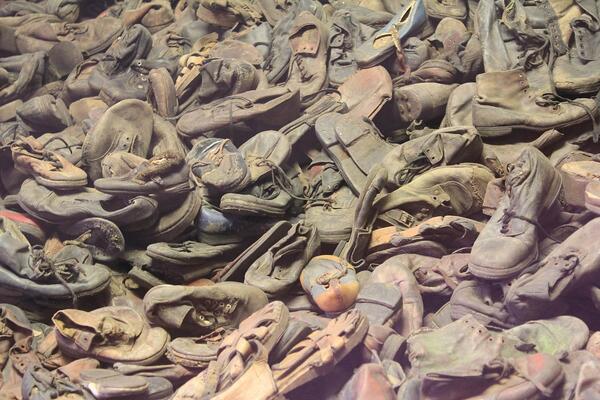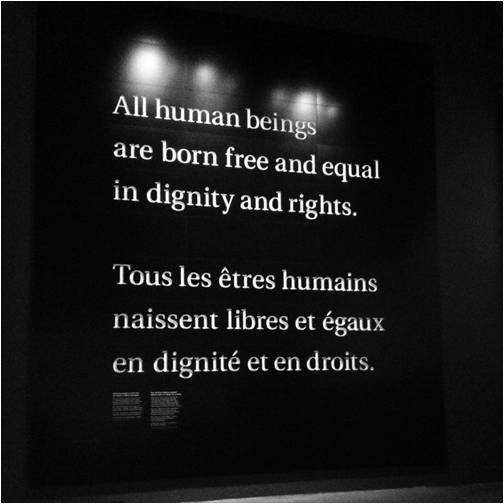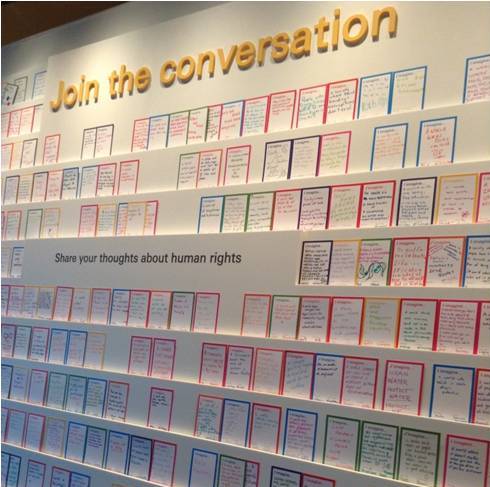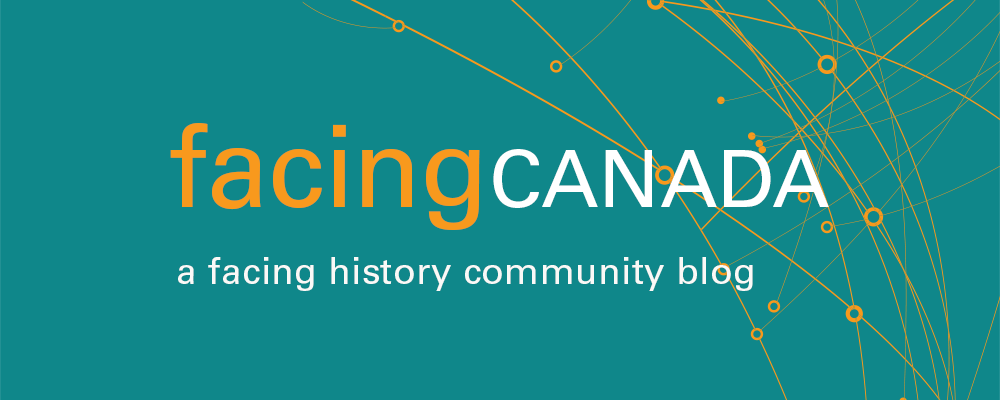Museums are invaluable to education. The carefully selected exhibits, information, and artifacts provide tangible and visual evidence for exploration, reflection, and dialogue that support lessons in the classroom. Museums allow students to build upon prior knowledge – to see things differently.

The Canadian Museum for Human Rights. (Photo courtesy of Jamie Harrison)
In late October, I had the opportunity to attend an educator’s preview of the new Canadian Museum for Human Rights in Winnipeg, Manitoba. At the time of my tour, many of the galleries were still under construction, but what I was able to see led me to think deeply, and at times differently, about how I teach in my own classroom.
Here are 8 lessons I took away from my visit to the Canadian Museum for Human Rights:
1. Take Students on a Journey
As you move through each of the museum's eight levels, it becomes progressively brighter (a symbolic – and physical – movement from darkness to light). It is thoughtfully and memorably planned to lead visitors in, to build knowledge, and to lead us toward hope. In the classroom, I take students on Facing History’s Scope and Sequence journey, exploring the role of the individual in society, the concept of “we” and “they,” the supporting history of human rights in Canada and throughout the world, the memory of those who were left voiceless, and the choice (and call) to participate in our own communities.

Stunning ramps of alabaster (a stone often used to symbolize spirituality, forgiveness, and healing) leads visitors from one gallery to the next. (Photo courtesy of Jamie Harrison)
2. Invite Multiple Perspectives
The Canadian Museum for Human Rights is highly interactive, with videos, games, and activities meant to encourage participation from all visitors. The space provides multiple perspectives that contribute to our understanding of human rights. Many of the events and issues explored in the museum stem from people, governments, and societies only seeing, or contemplating, a single perspective. As educators, we need to foster safe and respectful classroom environments, ensuring that students have the freedom to both contemplate and express multiple perspectives on a variety of issues. Doing so promotes personal growth and it allows students to see things beyond themselves – teaching strategies like contracting and fishbowl can help students to hear each other.

An interactive message of welcome greets all visitors to the museum. (Photo courtesy of Jamie Harrison)
3. Give Students Opportunities to Struggle with Making Meaning
On the second level, visitors are greeted by a visual and interactive timeline of important moments in human rights history. There is a video screen that runs the entire length of the wall, posing the question: What are human rights? Likewise, much of the art on display on this level – and throughout the museum – is open to interpretation, allowing each viewer to linger over their personal interpretations and meditate on the messages they draw from the pieces that they see. In our classrooms, we can use the working definitions teaching strategy to engage students in their own explorations of key issues. Analyzing visual images gives students a framework to interpret artwork. Giving students the opportunity to make their own meaning in the classroom promotes the intellectual involvement of students and recognizes that words and images can bear multiple, and often deeper, meanings as it is our beliefs, values, history, and understandings that give words and images value.

Photographs featured in the museum. (Photo courtesy of The Canadian Museum for Human Rights website)
4. Make Room for Other Ways of Knowing and Learning
The second level of the museum also looks at the Indigenous perspective and Canada’s journey toward recognizing the human rights of all individuals and groups. The Indigenous artwork here reflects groups from each of Canada’s provinces and territories. The space allows room for performance, storytelling, and discussion, and is annexed by a space for ceremony and smudging meant to recognize, and encourage, the values and traditions of our First Nations peoples. If the medium is the message, how are we using different mediums in our classrooms to teach students about the past and about the world in which they live?

A look into human rights and the Indigenous perspective. (Photo courtesy of Jamie Harrison)
5. Students Need to Deal with Complexity Because Life is Complex
The third level of the museum examines the history of protecting human rights in Canada, including a look at the Canadian Bill of Rights. The exhibits on this level demonstrate that not all issues of human rights are easy to decipher – the processes involving human rights can often be lengthy and difficult. As we work to equip students for the complexities of our world, we can bring complex case studies and resources into the classroom, and we can ask questions that perhaps have no “right” answers.

A bold statement stands out in the darkness. (Photo courtesy of Jamie Harrison)
6. Encourage Personal Connections
At the time of my visit, there was a temporary exhibit entitled “Peace” on the sixth level. Developed by the Canadian War Museum in Ottawa, the exhibit focuses on Canada’s role in peacekeeping and how that role has been challenged and has evolved throughout history. Two reflection walls encourage participation from visitors. Each provides a guiding question and asks visitors to make personal connections to the content. It provides an outlet for students to examine the impact that peacekeeping has on their identities and on the identity of Canada as a whole.

A reflection wall encourages participation and discussion on Canada's role in peacekeeping. (Photo courtesy of Jamie Harrison)
7. Choose to Participate
Level seven focuses on inspiring change – on choosing to participate. This level houses an exhibit looking at change and a communication wall where visitors are encouraged to reflect upon what they imagine the future to look like and how they can help to inspire positive change in that future.

Looking ahead...(Photo courtesy of Jamie Harrison)
8. Help Students See Beyond the Classroom Walls
The final gallery in the museum leads to the tower of hope – the peak of the museum – meant to symbolize a merging with the sky. The tower’s viewing platform provides a breathtaking panoramic view of the city of Winnipeg: the now and the future. Here you are surrounded by warmth and light – a true journey from the darkness. We need to help our students take and apply their learning beyond the walls of the classroom. They need to carry their knowledge, beliefs, and values with them so that they can apply them throughout their lives.

An elevator leads to the tower of hope. (Photo courtesy of Jamie Harrison)
How do you use field trips and museum visits in your courses? What impact do such visits have on your students?

